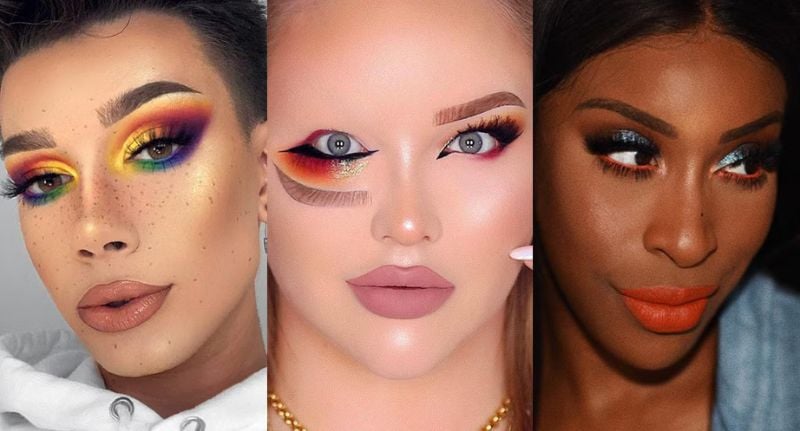Influencer authenticity, live shopping, augmented reality, personalisation and sustainability are set to define fashion and beauty marketing in 2025, according to new research from Taboola.
The findings highlight how brands are pivoting toward relatable content, seamless shopping, and inclusive creative to meet shifting consumer expectations across social and the open web.
At a glance: what marketers want to know
• Why it matters: Gen Z and Millennials now drive category growth and reward authenticity, utility and values‑led brands.
• Where to invest: Micro/nano influencers, shoppable social video, AR try‑ons, and inclusive, data‑driven creative.
• The payoff: Lower acquisition costs, higher conversion, fewer returns, and stronger long‑term brand equity.
Authentic content and the influencer reset
Taboola reports a shift from glossy perfection to documentary‑style, behind‑the‑scenes and user‑generated content. Micro and nano creators are increasingly favoured for their niche reach and community trust, complementing macro talent on major launches.
Short‑form video remains the engine room for discovery and consideration. Native and display continue to scale this storytelling: Taboola cites cosmetics brand Bedrop, which recorded a 77 per cent revenue lift and 33 per cent growth in website sessions after embracing native advertising on the open web.
• 85 per cent of Gen Z say authenticity matters when choosing a brand.
• 71 per cent have been influenced to make a beauty purchase because of a TikTok video.

Taboola boss Adam Singolda
Social commerce and live shopping step into the storefront
Platforms such as TikTok Shop and Instagram Checkout are now as critical as brand sites, with live shopping driving real‑time engagement and conversion. Taboola recommends building the plumbing first: consistent product tagging, live‑exclusive offers, and platform‑native features like live cart integrations.
Blending organic and paid – boosting lives and retargeting viewers – can reduce CAC while improving ROAS. Outside social, native and display placements are being used to promote drops and direct traffic into social shops.
• The social commerce market is projected to surpass US$2 trillion by end‑2025.
• Nearly 44 per cent of US TikTok users purchased via TikTok Shop in the past year.
• Seventy‑six per cent will buy from a brand they feel connected to on social.
Personalisation meets inclusivity
Consumers expect tailored experiences across product recommendations, landing pages and creative. AI‑powered quizzes and first‑party behavioural signals are informing dynamic journeys, with small to medium brands using AI personalisation in 2024 seeing a 15 per cent sales uplift year on year.
Inclusivity is now a baseline, not a bolt‑on. Campaigns reflecting diverse ethnicities, body types, gender identities and appearances deliver stronger engagement and brand loyalty.
• Brands that prioritise diversity outperform peers by 36 per cent.
• Seventy‑five per cent of customers are more likely to shop with inclusive brands.

AR try‑ons and virtual fitting rooms reduce friction and returns
Beauty brands are mainstreaming virtual try‑ons for shades and finishes, while fashion retailers test virtual fitting rooms. With AR tools integrated into platforms such as Instagram, Shopify and BigCommerce, implementation is getting easier – and greener.
AR helps buyers choose with confidence, cutting returns and reducing the need for physical tester displays. Advertisers are also experimenting with shoppable AR lenses to lift engagement at the top of the funnel.
• Sixty‑one per cent of shoppers prefer retailers that offer an AR experience.
• AR in beauty is forecast to grow by more than 25 per cent before 2027.
Sustainability and ethics drive preference and price tolerance
With climate concerns front of mind, consumers are rewarding brands that match their values. Refill, resale and recycle models are gaining traction, while transparent sourcing pages and third‑party certifications – such as B Corp, Fair Trade and Leaping Bunny – help shoppers verify claims quickly.
• Sixty‑two per cent of Gen Z prefer to buy from sustainable brands.
• Seventy‑three per cent of customers are willing to pay more for sustainable products.
• Sixty per cent of beauty shoppers say eco‑friendly packaging has influenced a purchase.
How to apply the five trends
• Start with audience truth: Build creator mixes around micro/nano communities that map to category niches.
• Make social shoppable: Standardise product tagging; schedule live drops; retarget viewers; mirror offers on site.
• Design for everyone: Set inclusivity guardrails in casting and creative; audit representation across channels.
• Test AR where it counts: Prioritise high‑return SKUs (shade‑dependent beauty, fit‑critical apparel) for try‑on pilots.
• Prove sustainability: Publish sourcing, packaging and impact data; add certification marks and QR codes on pack.
Bottom line
Taboola’s analysis suggests chasing every novelty is less effective than building on four enduring foundations: authenticity, inclusivity, interactivity and sustainability. For fashion and beauty marketers, that mix promises stronger ROI today – and sturdier brand equity tomorrow.
